| Date | Text | |
|---|---|---|
30 Nov 1950

Niko Tinbergen |
Niko Tinbergen (biology) Niko Tinbergen publishes The Study of Instinct. |
|
30 Nov 1950

progestin |
progestin (chemistry) The progestin norethisterone, significant in creation of the combined oral contraceptive pill, is synthesized by Carl Djerassi, Luis E. Miramontes and George Rosenkranz at Syntex in Mexico City. |
|
30 Nov 1950
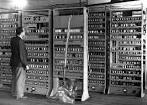
EDVAC |
EDVAC (computer science) EDVAC binary electronic stored program computer incorporating high speed delay line memory begins operation at the United States Army's Ballistics Research Laboratory at Aberdeen Proving Ground. |
|
30 Nov 1950

concordance |
concordance (computer science) Publication of Sancti Thomae Aquinatis hymnorum ritualium varia specimina concordantiarum ... A first example of word index automatically compiled and printed by IBM punched card machines, a concordance to work by Thomas Aquinas produced by IBM under the direction of Roberto Busa, an early instance of the use of data processing machinery in humanities research. |
|
30 Nov 1950
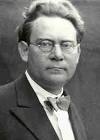
Hans Reichenbach |
Hans Reichenbach (history of science) Hans Reichenbach's book The Rise of Scientific Philosophy is published. |
|
30 Nov 1950
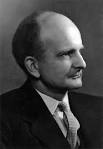
Richard Asher |
Richard Asher (medicine) Richard Asher describes Münchausen syndrome. |
|
30 Nov 1950
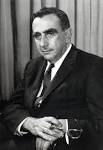
Edward Teller |
Edward Teller (physics) Edward Teller and Stanislaw Ulam, working for the United States, develop the first thermonuclear bomb. |
|
30 Nov 1950

Solomon Asch |
Solomon Asch (psychology) Solomon Asch begins publication of his conformity experiments showing how group pressure can persuade an individual to conform to an obviously wrong opinion. |
|
30 Nov 1950

World Health Organization |
World Health Organization (psychology) The World Health Organization's report on maternal deprivation, Maternal Care and Mental Health, written by English psychologist John Bowlby, is published. |
|
04 Sep 2015
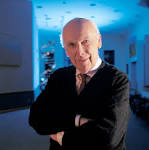
James Watson |
James Watson (organizations) James Watson joins Francis Crick under Max Perutz in the UK Medical Research Council's Unit for Research on the Molecular Structure of Biological Systems at the Cavendish Laboratory in the University of Cambridge led by Sir Lawrence Bragg. |
|
30 Nov 1950
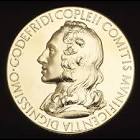
Copley Medal |
Copley Medal (awards) Copley Medal: David Keilin |
|
30 Nov 1950
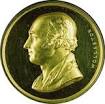
Wollaston Medal |
Wollaston Medal (awards) Wollaston Medal for Geology – Olaf Holtedahl |
|
01 Feb 1951

Ferranti |
Ferranti (computer science) Ferranti deliver their first Mark 1 computer to the University of Manchester (UK). It is the world's first commercially available general-purpose electronic computer. |
|
27 Feb 1951

Henry Louis Smith |
death Henry Louis Smith Died 27 Feb 1951 at age 91 (born 30 Jul 1859). American physicist and administrator who is credited with making the first X-ray photograph in the U.S. on about 12 Jan 1896, while he was a professor of physics and astronomy at Davidson College, North Carolina. Shortly after Röntgen's announcement of his discovery of X-rays, Smith copied the technique. Smith made an X-ray photograph of a bullet he had shot into the hand of a cadaver, that was published in the Charlotte Observer (27 Feb 1896). Shortly thereafter, he made the first clinical use of X-rays to locate a thimble stuck in a young girl's throat, enabling its surgical removal. Smith became the college president in 1901 and oversaw adding a new science building. He established an electric light plant. Near the end of WW I, his idea to inform the German population of President Wilson's peace plans was adopted. Millions of messages carried by gas-filled balloons were released from France into the winds over Germany. |
|
28 Feb 1951

Protein structure |
Protein structure In 1951, their theoretical description of the structure of proteins was published by Linus Pauling and Robert Corey in Proceedings of the National Academy of Sciences. |
|
30 Mar 1951
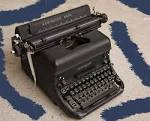
Remington Rand |
Remington Rand (computer science) Remington Rand delivers the first UNIVAC I computer to the United States Census Bureau. It is inaugurated on June 14. |
|
06 Apr 1951

Robert Broom |
death Robert Broom Robert Broom (born 1866), Scottish-born South African paleontologist. |
|
09 Apr 1951
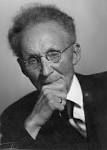
Vilhelm Bjerknes |
death Vilhelm Bjerknes Died 9 Apr 1951 at age 89 (born 14 Mar 1862). Vilhelm F(riman) K(oren) Bjerknes was a Norwegian meteorologist and physicist, one of the founders of the modern science of weather forecasting. As a young boy, Bjerknes assisted his father, Carl Bjerknes (a professor of mathematics) in carrying out experiments to verify the theoretical predictions that resulted from his father's hydrodynamic research. After graduating from university, Bjerknes moved on to his own work applying hydrodynamic and thermodynamic theories to atmospheric and hydrospheric conditions in order to predict future weather conditions. His work in meteorology and on electric waves was important in the early development of wireless telegraphy. He evolved a theory of cyclones known as the polar front theory with his son Jakob. |
|
22 Apr 1951

Horace Donisthorpe |
death Horace Donisthorpe Horace Donisthorpe (born 1870), English entomologist. |
|
01 May 1951
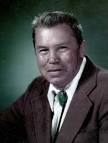
Carl A. Wiley |
Carl A. Wiley (technology) Carl A. Wiley publishes the concept of the solar sail. |
|
05 May 1951
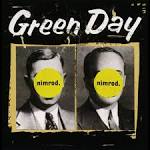
NIMROD |
NIMROD (computer science) The Ferranti NIMROD computer is presented at the Science Museum (London) during the Festival of Britain. It is designed exclusively to play Nim, using panels of lights, the first instance of a digital computer designed specifically to play a game. |
|
26 May 1951
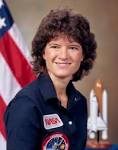
Sally Ride |
birth Sally Ride Sally Ride (died 2012), American physicist and astronaut. |
|
29 May 1951
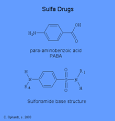
Sulfa drugs |
Sulfa drugs In 1951, a patent for improved sulfonamide drugs was issued to James W. Clapp and Richard O. Roblin, (U.S. No. 2,554,816). Sulfa drugs are members of a group of synthetic antibacterial drugs containing the sulfanilamide molecular structure. Sulfonamides (first observed in 1932) were the first chemical substances that were systematically used to cure and prevent bacterial infections in humans. Of the 5,000 sulfa drugs prepared and tested, fewer than 20 continue to have therapeutic value because resistant strains of bacteria have developed. More potent antibacterial drugs have largely replaced the sulfa drugs. They remain useful in the treatment of urinary tract infection. |
|
01 Jun 1951

synthetic aperture radar |
synthetic aperture radar (technology) Carl A. Wiley invents synthetic aperture radar. |
|
25 Jun 1951

Colour TV |
Colour TV In 1951, at 4:35 pm, the Columbia Broadcasting System (CBS) televised the one-hour premiere of commercial colour television with a program named Premiere. It was transmitted, using the CBS Field Sequential System (not Compatible Color), from New York to four other cities: Boston, Philadelphia, Baltimore, and Washington, D.C. The show included entertainment by leading personalities such as Arthur Godfrey, Faye Emerson, Sam Levenson, Robert Alda, Ed Sullivan, Isabel Bigley and Garry Moore, and statements by CBS executives William S. Paley and Dr. Frank Stanton. This system was not compatible with existing black-and-white TV sets and failed commercially; CBS colour broadcasts ended on 20 Oct 1951. |
|
01 Jul 1951

Maurice Wilkes |
Maurice Wilkes (computer science) Maurice Wilkes introduces the concept of microprogramming. |
|
01 Jul 1951

Niels Krabbe |
birth Niels Krabbe Niels Krabbe, Danish ornithologist. |
|
04 Jul 1951

William Shockley |
William Shockley (technology) William Shockley announces invention of the junction transistor. |
|
18 Aug 1951
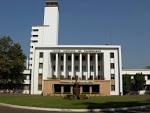
Indian Institute of Technology Kharagpur |
Indian Institute of Technology Kharagpur (organizations) Indian Institute of Technology Kharagpur inaugurated in West Bengal as the first of the Indian Institutes of Technology. |
|
04 Sep 1951

Transcontinental US TV |
Transcontinental US TV In 1951, President Harry Truman inaugurated transcontinental television service in the U.S. when AT&T carried his address to the opening session of the Japanese Peace Convention in San Francisco. The conference would formalize the end of hostilities with Japan, opening the door for Japan's economic recovery. The largest single television audience to date, estimated at over 30 million people, viewed the President Harry Truman, some as far away as New England. Eighty-seven stations all over the U.S. received and broadcast Truman's speech, the result of a $40 million infrastructure investment by AT&T. Microwave radio technology transmitted the television signal from San Francisco to Chicago. From there, it was carried on existing coaxial cables to the East Coast.. |
|
18 Sep 1951

John Clark |
birth John Clark John Clark (died 2004), English molecular biologist. |
|
30 Sep 1951

Barry Marshall |
birth Barry Marshall Barry Marshall, Australian physician, winner of Nobel Prize in Physiology or Medicine 2005. |
|
04 Oct 1951

Henrietta Lacks |
death Henrietta Lacks Henrietta Lacks (born 1921), African American source of the HeLa cell line. |
|
27 Oct 1951
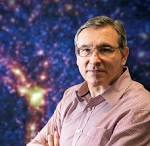
Carlos Frenk |
birth Carlos Frenk Carlos Frenk, Mexican cosmologist. |
|
29 Oct 1951

Robert Grant Aitken |
death Robert Grant Aitken Died 29 Oct 1951 at age 86 (born 31 Dec 1864). American astronomer who specialized in the study of double stars, of which he discovered more than 3,000. He worked at the Lick Observatory from 1895 to 1935, becoming director from 1930. Aitken made systematic surveys of binary stars, measuring their positions visually. His massive New General Catalogue of Double Stars within 120 degrees of the North Pole allowed orbit determinations which increased astronomers' knowledge of stellar masses. He also measured positions of comets and planetary satellites and computed orbits. He wrote an important book on binary stars, and he lectured and wrote widely for the public. |
|
29 Nov 1951
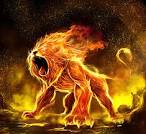
LEO |
LEO (computer science) LEO becomes the first computer to run a full commercial business application, for the British bakers J. Lyons and Co. |
|
05 Dec 1951
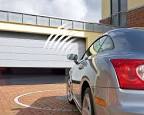
Automatic garage |
Automatic garage In 1951, the first push button-controlled Park-O-Mat garage opened in Washington, DC by Parking Services Inc. It had no ramps, no aisles and no lanes. Instead a single attendant, without entering a car, could automatically park or return an auto in less than a minute. It used a "vehicle parking apparatus" (patented 14 Oct 1947, No. 2,428,856). Two elevators parked 72 cars on a lot 25 by 40 feet. The garage was an open building with 16 floors and 2 basement levels. |